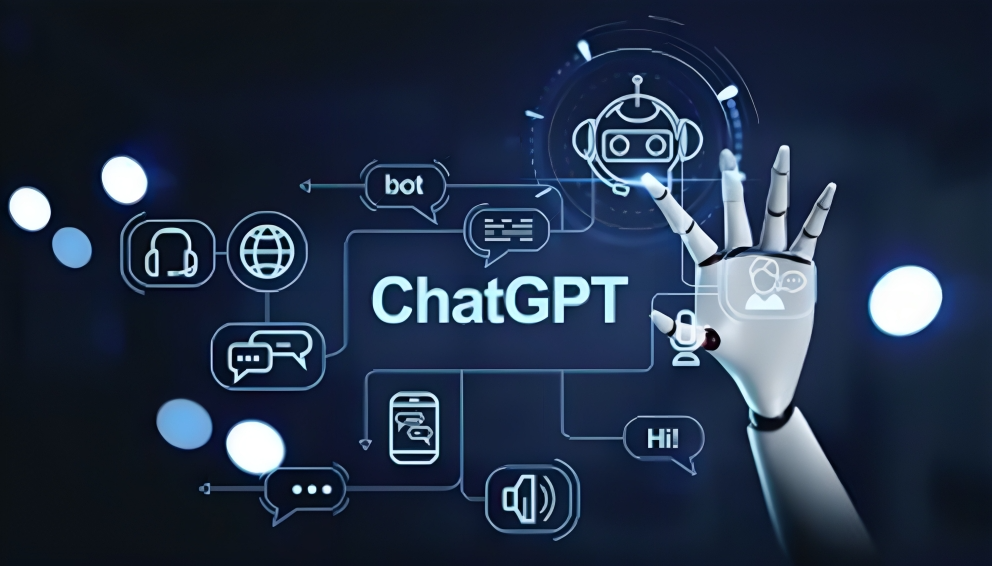
In today’s digital world, real-time communication is at the heart of many online experiences. Whether you’re developing a messaging platform, a collaborative tool, or a customer support chat, building a real-time chat application that can handle a massive user base, provide low latency, and maintain high availability is no small feat. In this blog post, we will take a deep dive into the technical intricacies of developing such a system. Moreover, we will explore how integrating AI-powered ChatGPT can elevate the user experience by providing intelligent responses and assistance.
Part 1: Designing the Microservices Architecture

1.1. Microservices vs. Monolithic Approach
One of the first decisions you’ll face when developing a real-time chat application is choosing between a monolithic or microservices architecture. While monolithic applications are simpler to develop initially, a microservices architecture offers several advantages:
1.2. Service Decoupling and Communication
To ensure efficient communication between microservices, consider using technologies like message queues or RPC (Remote Procedure Call) mechanisms. These approaches allow microservices to communicate asynchronously, reducing bottlenecks and improving system resilience.
Part 2: Real-time Communication with WebSockets

2.1. Introduction to WebSockets
WebSockets provide a reliable, bidirectional communication channel between a client and a server. Unlike traditional HTTP requests, WebSockets allow data to flow in both directions continuously, making them ideal for real-time chat applications.
2.2. Implementing WebSocket Server
Here’s a simplified example of how to implement a WebSocket server in Node.js using the popular library socket.io:
const io = require(‘socket.io’)(server);
io.on(‘connection’, (socket) => {
// Handle incoming connections
socket.on(‘chat message’, (msg) => {
// Broadcast the message to all connected clients
io.emit(‘chat message’, msg);
});
// Handle disconnects
socket.on(‘disconnect’, () => {
// Clean up resources
});
});
2.3. Handling WebSocket Connections
As your chat application grows, handling a large number of WebSocket connections efficiently becomes crucial. Consider implementing strategies such as connection pooling, load balancing, and optimizing message broadcasting to ensure low latency and high performance.
Part 3: Scaling for Performance and Availability
3.1. Load Balancing
To distribute traffic evenly across multiple WebSocket servers, use a load balancer. Popular options include NGINX, HAProxy, or cloud-based load balancers provided by AWS, Azure, or Google Cloud.
3.2. Caching and Data Storage
Efficiently caching frequently accessed data and choosing the right data storage solutions are essential for high performance. Consider utilizing in-memory databases like Redis for caching and scalable databases like MongoDB or Cassandra for storage.
3.3. Fault Tolerance and Redundancy
Design your chat application to be fault-tolerant by implementing redundancy at critical points. This includes having backup WebSocket servers and using database replication or sharding for data durability.
Part 4: Integrating ChatGPT for Intelligent Responses
4.1. Introduction to ChatGPT
Integrating AI, ML, Generative AI & Emerging Tech into your chat application brings a new dimension to user interactions. ChatGPT can understand user queries and generate human-like responses, enhancing the overall user experience.
4.2. Setting Up the ChatGPT API
To get started, sign up for an API key from a AI, ML, Generative AI & Emerging Tech provider such as OpenAI. Then, integrate the ChatGPT API into your chat application, configuring it to handle user queries.
4.3. Handling User Queries
When a user sends a message, route it to the AI, ML, Generative AI & Emerging Tech API for processing. Upon receiving a response, display it to the user, creating a seamless conversation between the user and the AI.
4.4. Enhancing User Experience
Leverage AI, ML, Generative AI & Emerging Tech to provide personalized suggestions, answer frequently asked questions, and assist users in a more human-like manner. Continuously train your AI model to improve its responses over time.
In this technical deep dive, we’ve explored the intricacies of building a real-time, scalable, and highly performant chat application using WebSockets and a microservices architecture. We’ve also seen how integrating AI-powered ChatGPT can elevate the user experience to the next level by providing intelligent responses and assistance.
By mastering these concepts and techniques, you can position yourself as a thought leader in the world of real-time web development, demonstrating your expertise in creating robust and AI-enhanced chat applications.
We invite you to share your thoughts, questions, and experiences in the comments section, and together, let’s shape the future of real-time communication with AI.
Want to build something great and looking for help? Contact Us today and together we can build great solutions for the digital next.

